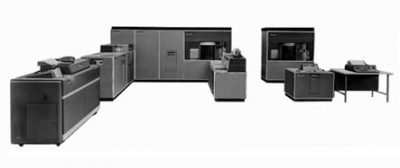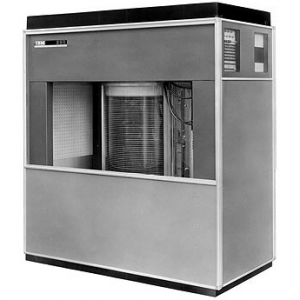First hard drive creation history
The first hard drive appeared thanks to Reynold Johnson, a former teacher, who in 1930s had constructed automatic test scoring machine. This machine was purchased by IBM and it hired the talented inventor as its engineer. In mid-January 1952 Johnson was offered to open a small lab on the West Coast, which could fill in the gaps in the development of new technologies.
Already next month Johnson leased a building for 5 years in San Jose, 99 Notre Dame avenue and began renovation. He had also placed some ads about recruiting staff in the local newspapers and magazines and started interviewing the applicants.
By the summer same year he already had 30 persons under his supervision, who were designing automatic test scoring machine, mark reading technology, tracking employees arrival and departure device, matrix and nonimpact printers, device with access to random writing on punch card. Experiments with data storage with possibility of random replacement pushed the engineers to using magnetic systems. Having determined the technology, they started looking for the suitable magnetic carrier: they tried drums, tape rings, cassettes, platters, wires and shafts. The most perspective was a magnetic disk, its rotation made information access easier and its shape gave the maximum space for recording.
In 1953 another six engineers joined the development process. These engineers had just completed the design and development of automatic data processing device for aerospace manufacturer McDonnell Douglas. The same year USAF placed an order for a device capable of storing a card catalogue for 50,000 records with instant access. So they made the initial device specifications but still had to solve a great number of engineering tasks. What should be the material used? How do we make the head fly over the disk surface? How to make it move to any of 50,000 tracks for less than a second?
Curiously enough, disks were painted with the same paint as the Golden Bridge in San Francisco. They had developed a witty way of applying even layer to all disks. They’d pour even quantity of paint into paper glasses, put over silk stockings and applied it this way. This method lasted for many years until the process was automated.
The history also has records about the first attempt to read and write information from the disk. On 10 February 1954 it was connected to the punching unit, and then they wrote and read out the following phrase “This has been a day of solid achievement.”
IBM 305 RAMAC
 In the picture is IBM 305 RAMAC (Random Access Memory Accounting) part of which was the first hard drive. It was quite a flexible system of its time, it consisted of IBM 305 processor module, IBM 370 printer, punching unit IBM 323, console IBM 380 (punching cards input mechanism, typewriter, keyboard, light indicators and control buttons), IBM 340 power supply unit and hard drive IBM 350. By 1961 there were over a thousand 305 RAMAC that were the last IBM tube systems.
In the picture is IBM 305 RAMAC (Random Access Memory Accounting) part of which was the first hard drive. It was quite a flexible system of its time, it consisted of IBM 305 processor module, IBM 370 printer, punching unit IBM 323, console IBM 380 (punching cards input mechanism, typewriter, keyboard, light indicators and control buttons), IBM 340 power supply unit and hard drive IBM 350. By 1961 there were over a thousand 305 RAMAC that were the last IBM tube systems.
The date of the first hard drive
5 February 1956 IBM 350 became commercially available (13 February is also accepted, that’s when the press-release was circulated). The first official mention about the hard drive was made on 6 May 1955, this day IBM announced that its small research and development lab in San Jose developed new data storage technology on magnetic disks. By that time the company already had the first working sample that had been assembled by 10 January 1955.
RAMAC system design was patented on 24 December 1954 and the design and it had been developed since the summer 1952.



 The very first computer hard drive became commercially available in September 1956. The model was called IBM 350 and was part of computer system 305 RAMAC. IBM 350 consisted of 50 aluminium disks 20 inches in diameter (610 mm) each, with 1200 RPM.
The very first computer hard drive became commercially available in September 1956. The model was called IBM 350 and was part of computer system 305 RAMAC. IBM 350 consisted of 50 aluminium disks 20 inches in diameter (610 mm) each, with 1200 RPM.
